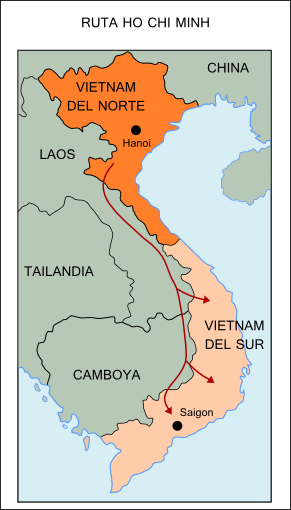The operational zone. Its functions and vulnerabilities.
The operative zone is the geographical space where develops the process of turning the mass of support of the strategic rear (forces, supports, logistics, communications, headquarters) into «units of action» qualified and specialized for its employment in «interfaces of action» with the enemy. These constitute the active points of what can call front, increasingly mobile and discontinuous, due to the dispersion of the forces, its tactical speed and its fire power.
The above mentioned units of action join combined arms groups, which low tactical level is in the habit of being the reinforced battalion or company, that have subsets or elementary units, in the mobile combat.
The critical elements of this zone, which is the physical support of that activity, are the communications of all kinds, the spaces of maneuvers (zones of deployment, of equip, of wait, of advance, provided with covers or desenfilades), the engineers units and of operational reconnaissance, the logistic means (stores, distributions means and zones) and the centers of production of the intelligence and the transmission of the reconnaissances.
The operational zone must have the sufficient geographical depth to be able to contain, supply, deploy, direct and command the sufficient number of units, following the necessary advance or assault spears close to the front, to repeat the efforts in «interfaces of action» and to achieve the tactical aim that in these appears and decides.
In practice a spatial symmetry is in the habit of existing, as general Richard Simpkin indicated, in the operational zones of both contenders, along the supposed constant line of the front. A difference very marked in the depth of a zone, can indicate the tactical weakness of a rival, either by minor resources or by a slower enrollment for the combat of its strategic reserves or military means in general (great strategy or total strategy level).
The reasons for including the engineers troops among the critical elements of the operational zone, reside in its specific fighting functions: they act against the enemy center of gravity; they are very scanty forces for all the tasks that they can fulfill; its action has a great multiplier effect on the enemy effort; they provide other forces engineers’ material for its particular use; they are responsible for the interceptions and reinforced cuts on the area and the most effective obstructions: antitank stable positions, minefields and more elaborated fortifications. With it they affect gravely the effective effort of our capacity of movement as operational system.
The functional mentioned elements of the operational zone are highly vulnerable. In effect, they lack enough nearby capacity of defense (including the infantry antitank, though they are of support), that is usually is limited to the security elements detached by the units and the centers and that, though it is circular, they are of punctual type in its positioning. If there takes place the destruction or the breaking up of these functional critical elements, which act as a connected and interdependent net of an alone seam. Generating the affected elements “commotion waves” for all it and this will affect exponentially the functionality of the operational rear, making it finally collapse.
Deprived the enemy action units in its active points of the front, of its operational zone, which qualifies, supports and stimulates them, the survival of the whole front sector affected is impossible after a time, for exhaustion or consumption. Likewise, the moral effects of the ungrateful surprise and the loss of the expectations precipitate the collapse of its front more rapidly yet. Its forces will tend to move back towards its deep rear, to protect the functional elements that allow them to operate tactically.
And, what about of the capacity of combat of deployed units in the operational zone, being prepared to operate in this front sector or in contiguous one? Can they defend the functional elements of its operational zone? Can they counterattack the enemy penetration?
We must remember that any military group, from a tank crew up to an army, passes most of its time, neither deployed nor prepared to fight. Its time passes doing labors and operations that allow it to go to fight in the chosen moment.
Whether training, embarking, moving, equipping, supplying, reorganizing, waiting, or resting, no unit is fully combat-ready. It is precisely in the operational zone where units prepare to conduct their operations against the enemy. Even if this is a tactical march, «pushing» a flexible and discontinuous front with weak combat readiness on the part of the enemy.
For the defense of the operational zone, we can only rely on the ready operational reserves and the deeper tactical reserves, both located in that sector or in adjacent ones.
The support mass is the set of military assets that converge in the theater or campaign. Its means of action is stability and is governed by the «management» of senior commanders. This is based on defined processes and standards, which are stable over long periods of time, which give it the necessary predictability of the desired effects of its action. They maintain and demonstrate the cohesion and the functionality of these military structures and hyperstructures.
At the army group level, the support mass extends from the forward limit of the defensive position to 300-500 km in own depth and with a width of approximately 300 km.
Towards the 75-100 km zone, the support mass hyperstructure disaggregates into the most active structures and microstructures, which constitute the operational and tactical units. These will operate in the “fields of action” and at the “interfaces of action” with the enemy, up to approximately 150-250 km in depth. To this end, they will follow operational-tactical combat and maneuver procedures, guided by the criteria of decentralization, exploitation of opportunities, surprise, counterattacks, enemy gaps, etc., and governed by the superior intent and its center of gravity, all of which are specific to the structures and microstructures active with the enemy.
(to be continued).



















